Idea by
Emanuele Barili, Cosimo Balestri, Olivia Gori, Lorenzo Perri
ECÒL
Call for ideas 2018
Inhabiting patterns
Inhabiting patterns

This open series of projects aims to investigate and trigger new social dynamics by redefining public space through simple geometrical gestures. The given brief is always dissected into sets of basic actions, then translated into a vocabulary of drawn elements. Lines, colours and tridimensional shapes are treated to form inhabitable patterns, intersections among atmosphere, occupation and geometry.
These architectural devices, playful yet strongly rigorous in their execution, are trying to grasp a new iconography, where precision and symbolism merge into accurate organizational systems.
To build an active and experiential understanding of space, we also attempt to design the making process of the projects, valuing the importance of our physical presence during the construction phases, especially for temporary interventions.
This results in a gain of trust of the community, enabling the work to go beyond its ephemeral nature and create a bond with the inhabitants and the visitors.

Drawing public space aim was to work towards the idea of appropriation of public space by its inhabitants. The playful act of creating a pattern operates at different levels: at the small scale it frames various gatherings of people, while at the urban scale it creates a recognizable landmark. By strongly highlighting an already public ground, the project’s intent is to add a layer of play, character and curiosity to a generic space and to engage the community in further events and interactions.
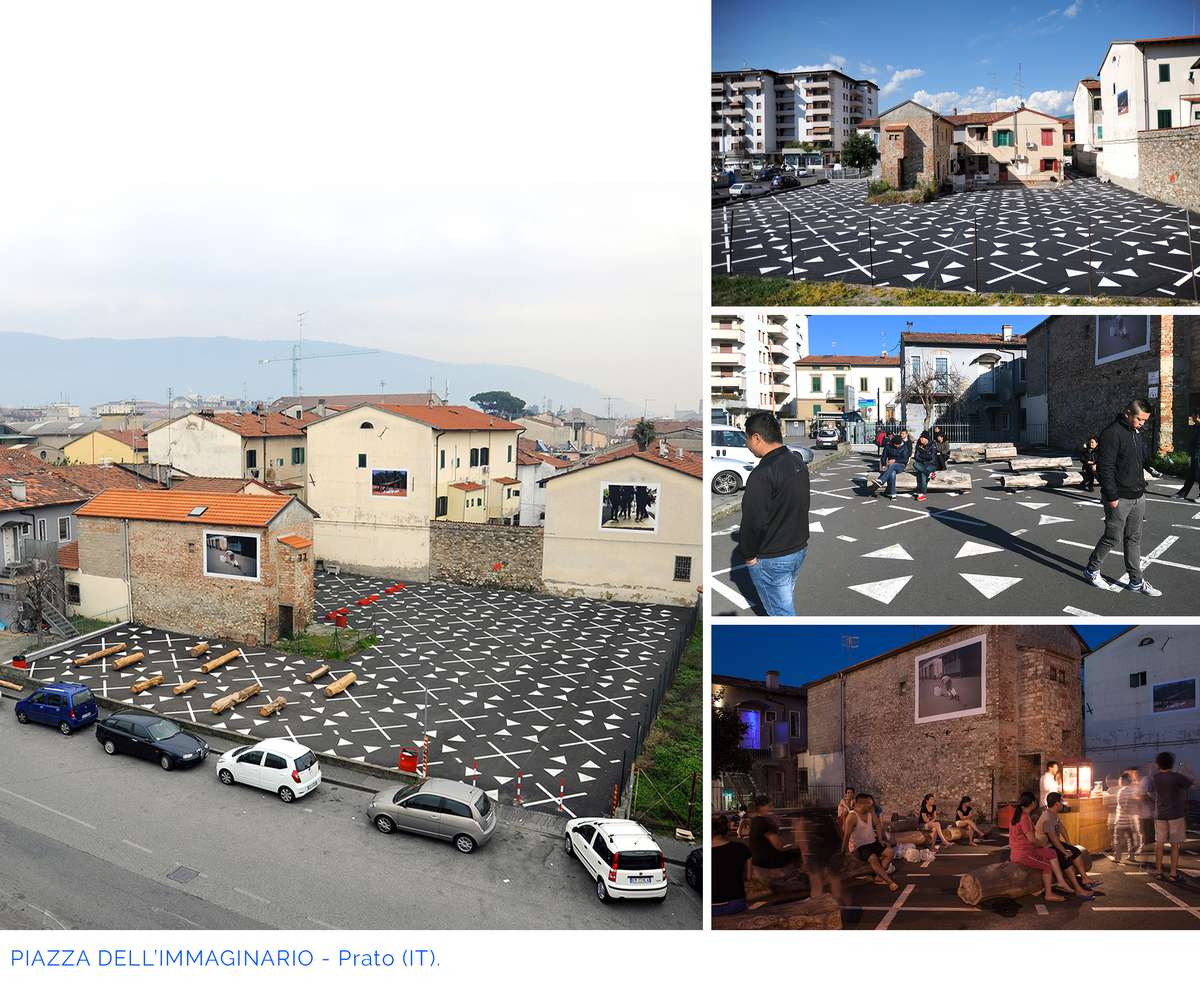
The new paving for Piazza dell'Immaginario, previously used as a supermarket parking lot, is designed and conceptualized as a mosaic, able to embellish the space and at the same time redefine it. The alternation of triangles and crosses is realized with the same paints and templates used for the marking of roads. Contrary to the traffic signs univocal meaning, here these flat geometries want to suggest a multitude of uses and interpretations, promote play and affect the perception of the place.
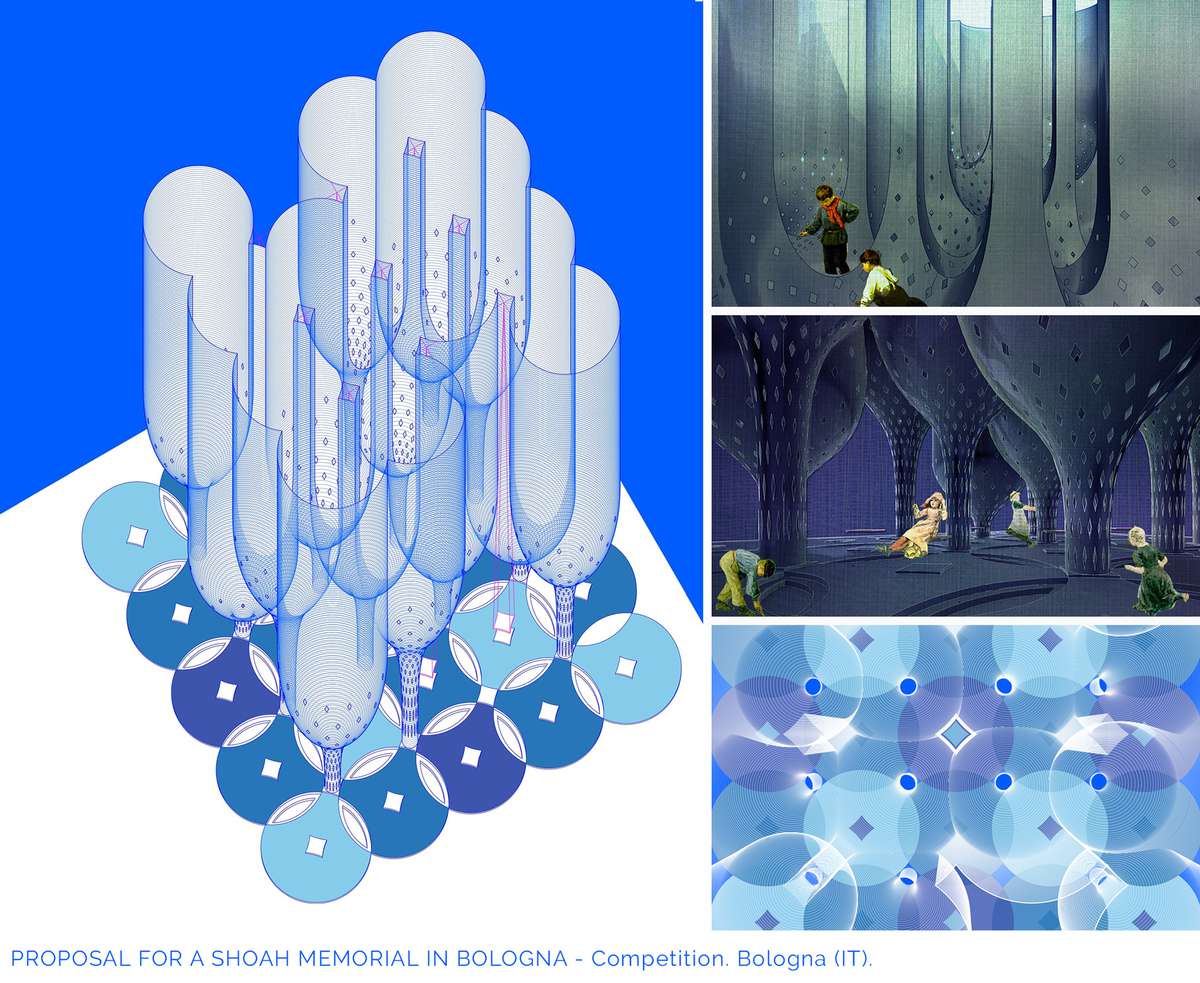
This proposal for an Holocaust Memorial prevents memory from being just a static concept, combining it with life and playful behaviors. The inhabitable shapes constructing the monument, a series of artificial trees made of perforated aluminum, allow the users to climb within the hollow intersections, soaring from the shadow of the “undergrowth” to the colorful light of the space between the “branches”. A tridimensional pattern, whose privileged discovery would be through the eyes of a child.
Inhabiting patterns
Inhabiting patterns

This open series of projects aims to investigate and trigger new social dynamics by redefining public space through simple geometrical gestures. The given brief is always dissected into sets of basic actions, then translated into a vocabulary of drawn elements. Lines, colours and tridimensional shapes are treated to form inhabitable patterns, intersections among atmosphere, occupation and geometry.
These architectural devices, playful yet strongly rigorous in their execution, are trying to grasp a new iconography, where precision and symbolism merge into accurate organizational systems.
To build an active and experiential understanding of space, we also attempt to design the making process of the projects, valuing the importance of our physical presence during the construction phases, especially for temporary interventions.
This results in a gain of trust of the community, enabling the work to go beyond its ephemeral nature and create a bond with the inhabitants and the visitors.
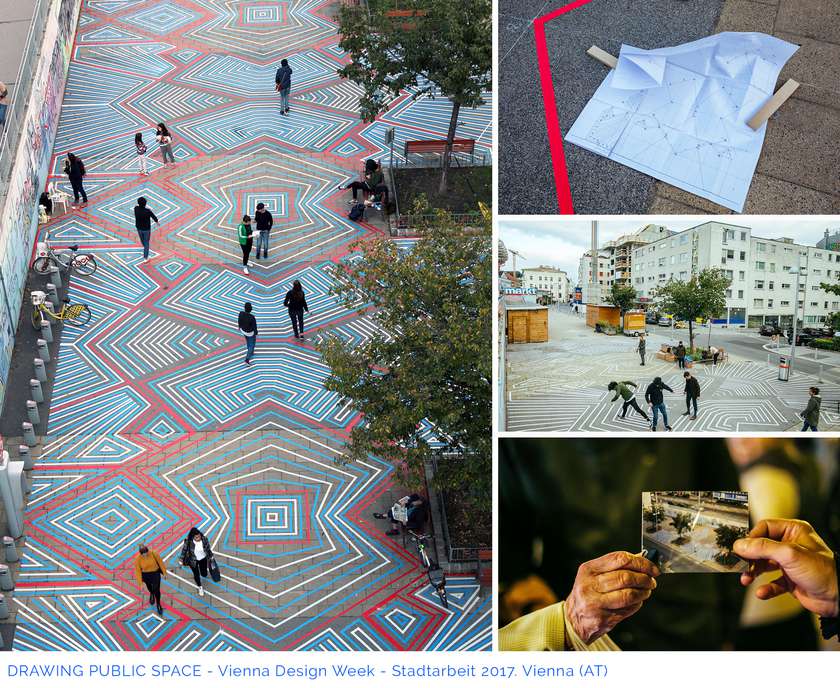
Drawing public space aim was to work towards the idea of appropriation of public space by its inhabitants. The playful act of creating a pattern operates at different levels: at the small scale it frames various gatherings of people, while at the urban scale it creates a recognizable landmark. By strongly highlighting an already public ground, the project’s intent is to add a layer of play, character and curiosity to a generic space and to engage the community in further events and interactions.
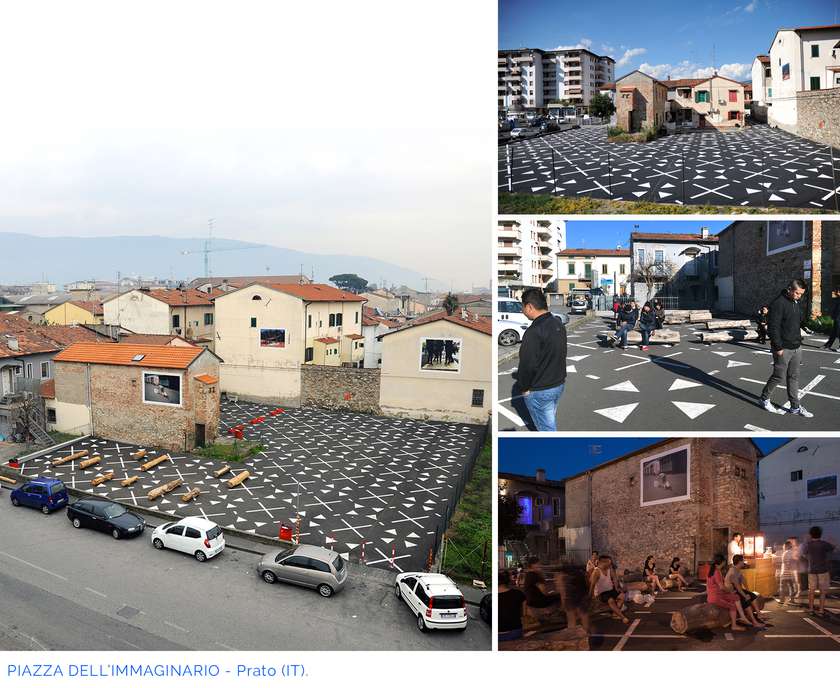
The new paving for Piazza dell'Immaginario, previously used as a supermarket parking lot, is designed and conceptualized as a mosaic, able to embellish the space and at the same time redefine it. The alternation of triangles and crosses is realized with the same paints and templates used for the marking of roads. Contrary to the traffic signs univocal meaning, here these flat geometries want to suggest a multitude of uses and interpretations, promote play and affect the perception of the place.
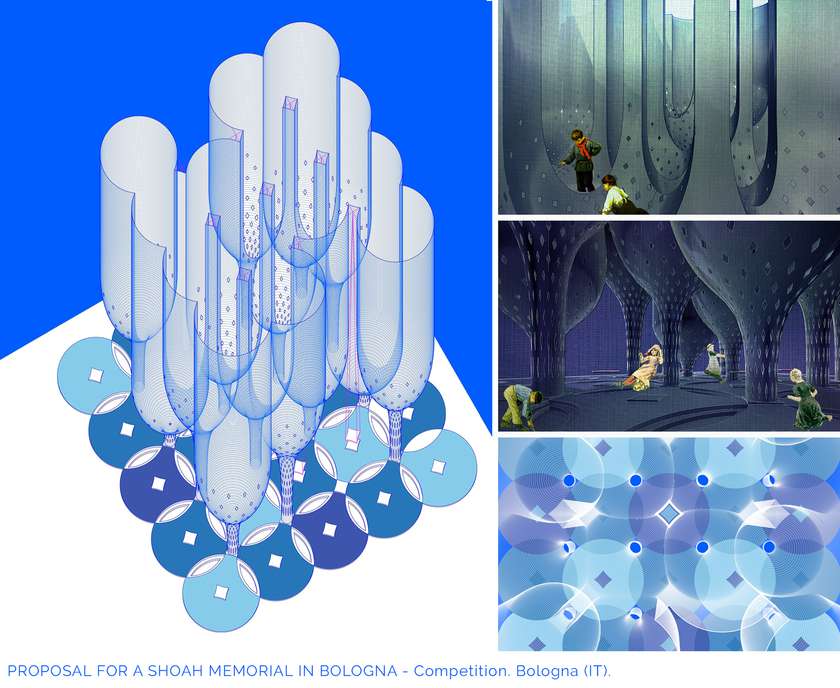
This proposal for an Holocaust Memorial prevents memory from being just a static concept, combining it with life and playful behaviors. The inhabitable shapes constructing the monument, a series of artificial trees made of perforated aluminum, allow the users to climb within the hollow intersections, soaring from the shadow of the “undergrowth” to the colorful light of the space between the “branches”. A tridimensional pattern, whose privileged discovery would be through the eyes of a child.